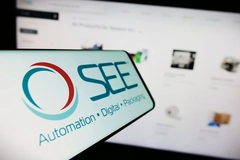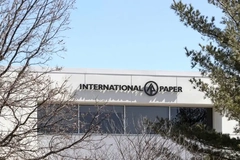Molded fiber potential: RaboResearch stresses regulatory support needed to scale single-use plastic alternative

The transition of molded fiber products from simpler to more advanced F&B packaging is gaining momentum, finds Rabobank’s RaboResearch in its latest report.
The RaboResearch analysts say the shift is driven by increasing regulatory pressure to reduce single-use plastic (SUP) packaging waste, technological advancements such as barrier coatings and production processes, and growing demand from consumers and brands for more sustainable packaging options in foodservice and retail.
But despite its broad applicability, scaling the production of molded fiber packaging faces several challenges. These include packaging performance and functionality, higher associated costs and competition from other alternatives to SUP.
While innovative technologies are under development, continued advancements in barrier coating technology and improved processing efficiency are still needed to lower costs.
The US lags behind Europe
Natasha Valeeva, senior analyst for Packaging and Logistics at RaboResearch, tells Packaging Insights that advanced European packaging regulations means companies are more prepared to invest in sustainable packaging solutions.
“In Europe, brand owners have been more proactive in setting their own packaging sustainability targets, primarily focusing on reducing virgin plastic use and enhancing packaging recyclability. Molded fiber packaging is one of the alternatives which can help meet their targets.”
Technology and further regulation are needed to shift the food sector away from SUP products.Meanwhile, Xinnan Li, analyst for Packaging and Logistics at RaboResearch, tells us that in North America, Canada has a stronger regulatory framework in this area but the US is lagging.
“The upcoming Extended Producer Responsibility in several US states will positively impact these developments, but so much still has to be worked out for policy details, so the US market is very much in a ‘wait-and-see’ moment.”
Combining technology with regulation
Li asserts that technological advancement and regulatory changes are most crucial for bringing molded fiber to the top of the material chain.
“Technology that improves barrier performance (so the product lasts longer) and recyclability in the existing infrastructure and reduces cost (so the product is cheaper) will be critical for wider adoption of molded fiber packaging beyond foodservice and premium/niche sectors,” says Li.
“Regulation focusing on the reduction of SUP packaging would incentivize (CPG) companies’ investments in trialing (and eventually paying for) alternatives. This will create much-needed demand the market needs.”
Valeeva adds that although regulations are a major driver for molded fiber packaging, they also create much uncertainty until finalized.
“For example, the EU’s PPWR still awaits its final ‘formality’ announcement. Some brands, retailers, and foodservice chains might be more careful and wait for final regulations before deciding to switch to new alternatives such as molded fiber and moving up from pilots and trials to large contracts,” she says.
“Certainty about the technology that it provides all what customers need for its (food) products remains crucial. Market opportunities are there, but the market waits for more certainty to scale up.”
Carton leads molded fiber race
While molded fiber presents a viable solution for replacing many SUPs, it is not the only option.
Li says that folding carton can compete with molded fiber, especially for commodity-like markets, such as salad bowls and multi compartment clamshell containers.
He highlights that folding carton shares many similar qualities as molded fiber as it is paper-based, anticipating that it will “benefit equally” from the regulatory environment change and from barrier coating improvements.
“Furthermore, the sector has large producers with large existing production capacities and deep pockets for investments and existing customer and distribution networks.” Carton shares similar qualities as molded fiber, anticipating that it will “benefit equally” from regulatory changes.
Carton shares similar qualities as molded fiber, anticipating that it will “benefit equally” from regulatory changes.
While Valeeva agrees that folding carton has great chances to push away molded fiber, she stresses that despite its advantages, molded fiber solutions remain single-use and do not always help reduce packaging waste.
“In Europe, moving forward, we expect increasing competition from reusable packaging in certain market segments, such as foodservice. Reusables still need to do more work before they are a viable, scalable option for a voluntary switch,” she adds.
“Regulatory initiatives also support the adoption of reusable packaging. For example, the EU’s current PPWR draft proposes a 10% reusable packaging offering in foodservice by 2030. However, in certain market segments, molded fiber packaging will outperform its competitors due to its ability to provide versatile shapes (similar to plastic).”
Call for further innovations
The researchers expect the foodservice sector to drive the bulk of opportunities for molded fiber packaging, which will ramp up its scalability in the US and Europe.
While the US foodservice market may grow faster in absolute volume, the study authors expect the European market will achieve faster adoption due to upcoming regulations. “We also expect molded fiber packaging to attract attention from premium and niche segments, especially for customized products that do not serve the mass market.”
“These segments, with their higher-margin products, can afford more expensive packaging, and their customers are more willing to pay for sustainable packaging options. In food segments, molded fiber will continue to compete with other packaging options, so further innovations to improve sustainability and economic feasibility are crucial,” stress the researchers.
Success is more likely in applications where molded fiber products can outperform competitors in performance and cost. Extra costs remain a challenge, but upcoming regulations could help, concludes the study.











